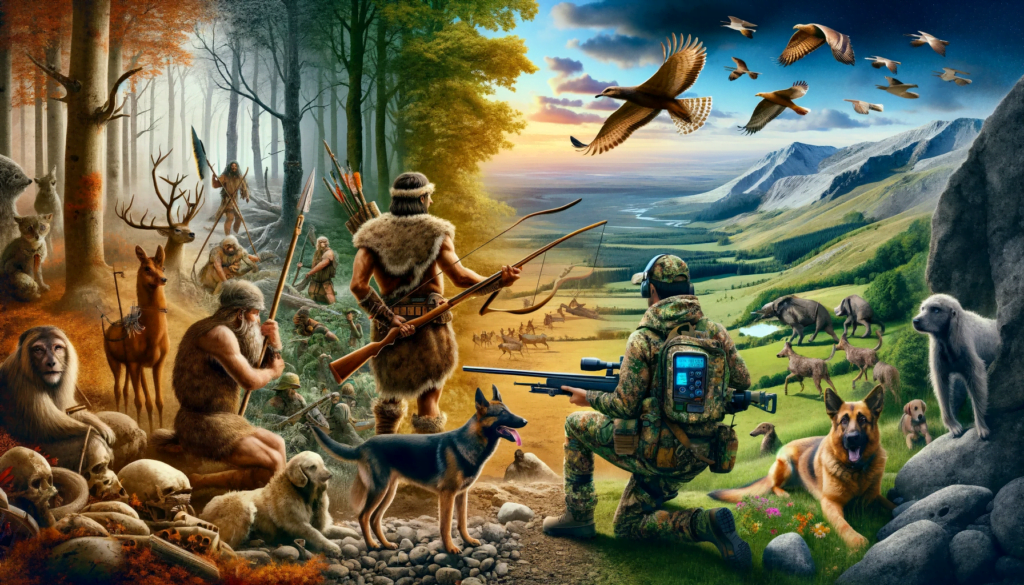Hunting Techniques: Mastering the Art of the Hunt

Table of Contents
Introduction to Hunting
The Essence of Hunting
Hunting has evolved from a means of survival to a recreational activity deeply rooted in conservation and wildlife management. It’s about understanding the natural world and our place in it.
Hunting Today: Ethics and Sustainability
Modern hunting is defined by a strong ethical framework focused on sustainability and respect for nature. It’s crucial for hunters to adhere to these principles for the future of the sport and the environment.
Preparation: The Key to Success
Understanding Your Quarry
Knowledge about the animal you’re hunting is vital. This includes habits, habitats, and patterns. It’s not just about the hunt; it’s about understanding the ecosystem.
Essential Gear Checklist
The right gear can make or break your hunt. We’ll provide a comprehensive checklist, from clothing to weaponry, ensuring you’re fully prepared for any situation.
Hunting Techniques: From Basic to Advanced
Still Hunting: The Silent Stalker
This method involves moving slowly and quietly through an animal’s habitat, looking for signs and sounds. It’s a test of patience and stealth.
Spot and Stalk: The Game of Patience
Spot and stalk hunting requires identifying your quarry from a distance, then carefully moving into a position for a shot. It’s a challenging but rewarding technique.
Calling and Decoying: The Art of Deception
Using calls and decoys can lure animals into range. This section covers the different types of calls and strategies for various species.
Bow Hunting: A Test of Skill and Precision
Bow hunting is a traditional and challenging method that tests your skill, patience, and precision. We’ll discuss techniques, equipment, and strategies for successful bow hunting.
Rifle Hunting: Mastering the Shot
Rifle hunting is about precision and understanding ballistics. We’ll cover everything from choosing the right rifle to shot placement and tracking.
Advanced Tactics: Elevating Your Hunting Skills
Reading Animal Signs and Tracking
Understanding animal signs and tracks is essential for locating your quarry. We’ll teach you how to read the wilderness like a book.
Camouflage and Concealment: Blending In
The art of camouflage is crucial in getting close to wildlife. We’ll explore various techniques and gear to help you blend seamlessly with your surroundings.
Wind and Weather: Using Nature to Your Advantage
Weather and wind can significantly impact your hunting success. Learn how to use these elements to your advantage.
Safety and Ethics: A Hunter’s Responsibility
Safety Protocols in Hunting
It is paramount in hunting. This section covers essential safety practices to ensure a safe hunting experience for everyone involved.
Ethical Hunting Practices
Ethical hunting is about respect for wildlife and the environment. We discuss the principles of fair chase and the importance of sustainable hunting practices.
Conclusion: The Future of Hunting
As we conclude, we reflect on the evolving nature of hunting and its future, emphasizing the role of responsible hunters in wildlife conservation.
Frequently Asked Questions
Q1: What is the Best Time of Day for Hunting?
A1: The best time of day for hunting largely depends on the species you’re targeting. However, many animals are most active during dawn and dusk, making these times particularly effective for hunting. It’s essential to understand the specific patterns of the animal you’re hunting for optimal results.
Q2: How Important is Wind Direction in Hunting?
A2: Wind direction is crucial in hunting. Animals have a keen sense of smell, and your scent can alert them to your presence. Always hunt with the wind in your face or crossing you, so your scent is blown away from the animal. This reduces the chances of the animal detecting you.
Q3: What are the Key Elements of Ethical Hunting?
A3: Ethical hunting involves fair chase, respect for wildlife and nature, and adherence to hunting laws and regulations. It also includes ensuring a quick and humane kill, avoiding wastage of meat, and contributing to wildlife conservation efforts.
Q4: How Do I Choose the Right Hunting Gear?
A4: Choosing the right hunting gear depends on the type of hunting, the environment, and personal preference. Essential factors include appropriate clothing for weather conditions, the right weapon for your quarry (bow, rifle, etc.), and necessary safety equipment. Research and seek advice from experienced hunters to make informed choices.
Q5: Is It Necessary to Take a Hunter Education Course?
A5: Yes, a hunter education course is highly recommended, and often required, for new hunters. These courses cover important topics like hunting laws, safety procedures, ethics, wildlife management, and first aid. They are crucial for responsible and safe hunting practices.
For more please visit: shooting gears







